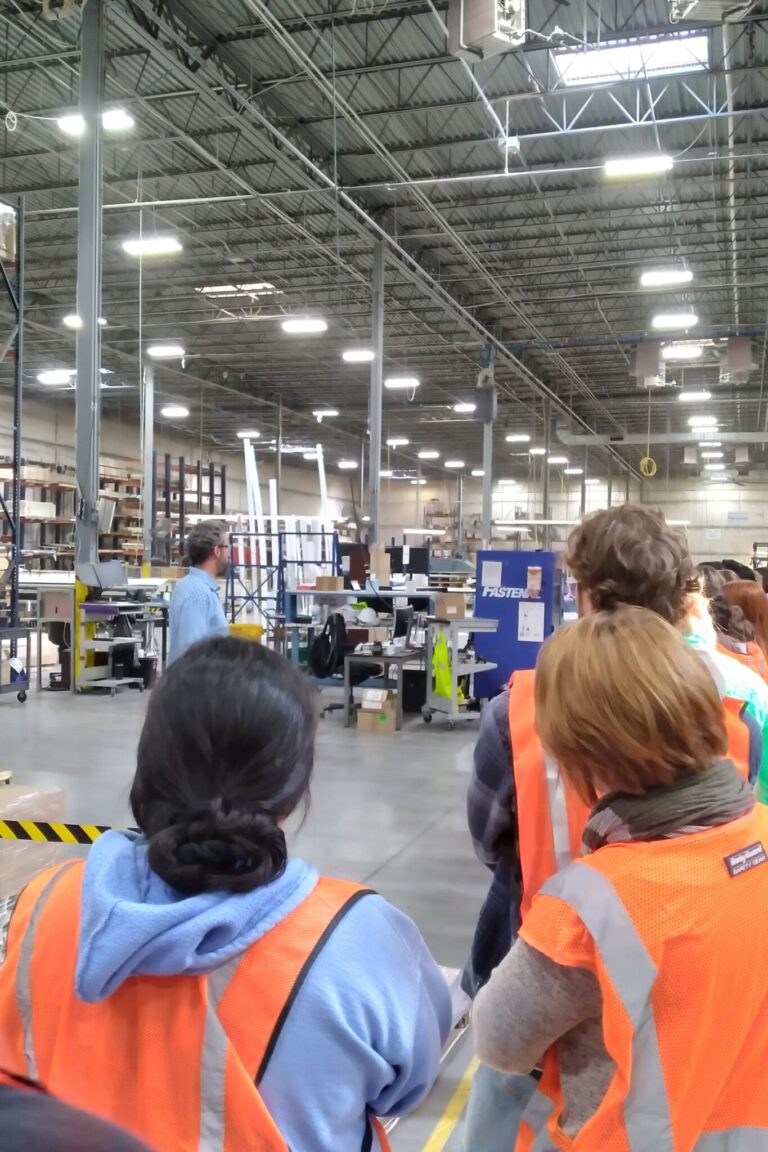
Colorado State University’s Interior Architecture and Design Program in the Department of Design and Merchandising is lighting the way for students thanks to a Lesley Wheel Grant for $30,000. The grant is awarded by the Nuckolls Fund for Lighting Education and will be used to develop a course called “Lighting Applications for Health-Promoting and Sustainable Interiors.” CSU is one of only four universities to receive funding this year.
Faculty expertise
“The course titled “Lighting Applications for Health-Promoting and Sustainable Interiors” will be a foundational course in lighting design and theory that emphasizes experiential learning through the application of technology with attention to the important topics of health, well-being, and sustainability,” said Stutzman, an instructor in interior architecture and design in the Department of Design and Merchandising.
Stutzman and Leah Scolere, an assistant professor in interior architecture and design and the program coordinator, were the primary investigators/recipients. This grant development was supported by Karen Hyllegard, professor and department head.
Stutzman has taught the introductory lighting course at CSU for three years and looks forward to expanding the course offerings in this area with the support of the grant.
Scolere has served as the Interior Architecture and Design program coordinator and has been working to expand the course offerings in the program to serve the growing interest of students.
“The Interior Architecture and Design Program at CSU embraces a holistic approach to education that focuses on experiential and value-added learning, which includes course/curriculum development in key areas of interior design, such as lighting design and theory,” said Scolere. “New courses in lighting foster additional opportunities for students to engage in experiential learning supported by a collaborative academic-industry partnership.”

A growing program
Five years ago, the Interior Architecture and Design Program had 191 students enrolled. Today, the program has 327 students. Recently, the program announced a new concentration to serve interested students and expand the course offerings available to meet the growing enrollment numbers.
The Interior Products and Retailing Concentration prepares students to become design-specialist entrepreneurs in the interiors industry. Students will gain in-depth knowledge of interior products and furnishings, design thinking processes, marketing and consumer behavior strategies, and relationship-building skills for business development.
As part of this new concentration, there is an elective specialization in lighting. The “Lighting Applications for Health-Promoting and Sustainable Interiors” course will be foundational in this specialization and is the first step in the planned development of 3-4 lighting specialization courses to provide students with a range of experiential learning opportunities aligned with career opportunities in lighting.

Innovative spaces
Students in the Interior Architecture and Design Program already learn and create in the innovative Nancy Richardson Design Center, outfitted with fabrication, wood, and metal labs and other inspiring learning spaces and classrooms. On the third floor, a dedicated lighting laboratory will gain equipment for students to explore and will serve as the centralized location for housing equipment/technology to support knowledge and understanding of lighting. But the learning will extend beyond the lab, too.
“The Lesley Wheel grant is helping us take lighting education to the next level at CSU,” said Scolere. “We are grateful for this investment in the program and equipment, such as a mobile lighting cart making equipment mobile from the laboratory to the classroom and beyond allowing students to learn about lighting in this new course and future lighting courses to come within and beyond the lab.”
The Department of Design and Merchandising is part of CSU’s College of Health and Human Sciences.